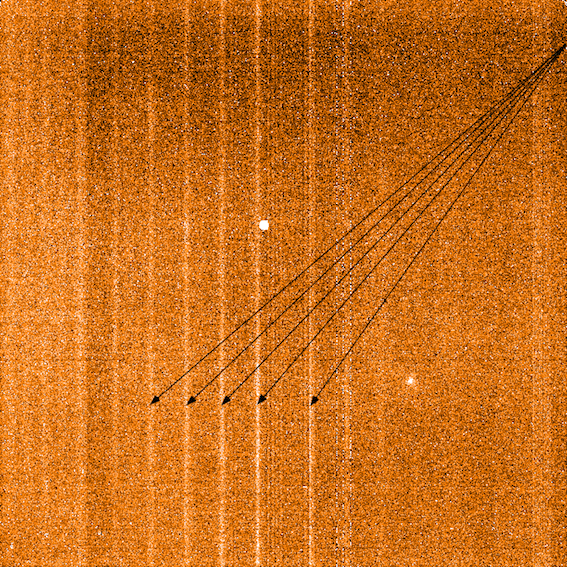Data Reduction Frequently Asked Questions
There seems to be an extraneous signal in my science image. Where does this come from?
SINFONI’s detector is very sensitive to high flux levels. If a very bright object is observed prior to your observations, some amount of this signal may persist into your exposures (hence the name “persistence”).
This effect can best be seen in long darks taken immediately after the observation of a bright sources. In this figure, the remnant signal is pointed out:

Although the saturation level of the detector is 45000 ADUs, SINFONI observations must keep below about 1/6 of that to avoid detector persistence. Detector persistence would affect the subsequent observations of faint sources, and can take days to disappear, therefore this must be avoided. The current detector persistence limits are 6000, 7000, 8000 and 7000 ADUs per (detector) pixel for J, H, K and H+K respectively. This usually means no objects with J, H, K magnitudes < 6mag must be visible within a field of view of 15" around the AO guide star and/or the target.
There have been instances in which the SINFONI flat was over-exposed. If this occurs, the dark images can display larger regions affected by persistence. This is an example dark from 2011-03-20:

